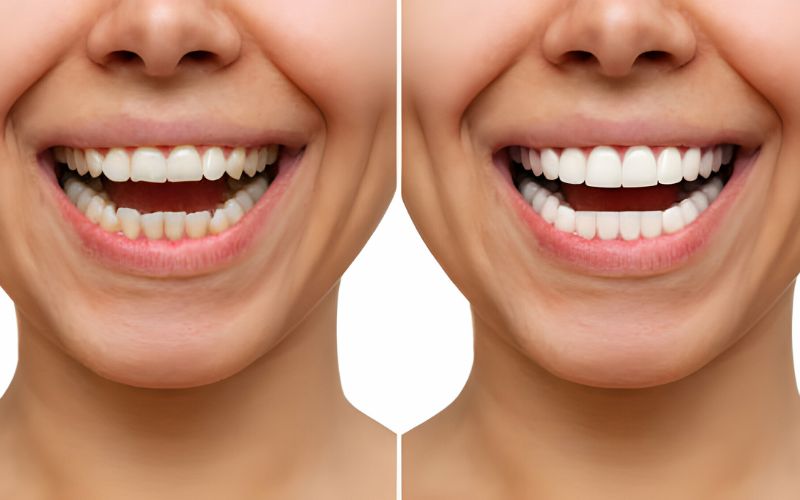Are you considering enhancing your smile but not quite sure where to start? Partial veneers might be the solution you’re looking for. These thin pieces of porcelain or composite resin are designed to cover only a portion of your teeth, improving their appearance while maintaining a natural look. In this article, we’ll dive deep into what partial veneers are, their benefits, the procedure for getting them, and how they compare to other cosmetic dental options.
What are Partial Veneers?

Partial veneers are a form of cosmetic dentistry aimed at improving the appearance of your teeth without the need for extensive dental work. Unlike full veneers that cover the entire front surface of a tooth, partial veneers cover only a specific area, making them a less invasive option. This means you can enhance your smile without the discomfort and recovery time associated with tooth removal, providing a more comfortable and convenient solution for achieving your desired dental aesthetics.
Materials Used
The most common materials for partial veneers are porcelain and composite resin. Each has its advantages, with porcelain offering durability and a more natural appearance, while composite resin is more cost-effective and requires less tooth preparation.
The Need for Partial Veneers
Partial porcelain veneers address a range of dental issues, including discoloration, minor cracks, chips, and gaps between teeth. They are an excellent option for those who wish to correct these imperfections without undergoing more invasive procedures like crowns or full porcelain veneers.
Consultation and Diagnosis
Initial Consultation
The first step towards getting partial veneers is a consultation with your dentist. This meeting is crucial for diagnosing your dental issues and determining if partial veneers are the best solution for you.
Preparation and Molding
Preparing Your Tooth
Preparation for partial veneers involves removing a minimal amount of tooth enamel to make space for the veneer. Your dentist will then take an impression of your tooth, which will be used to create your custom veneer.
The Bonding Process
Securing the Veneer
Once your partial veneer is ready, your dentist will bond it to your tooth using a special adhesive. This process requires precision to ensure the veneer fits perfectly and looks natural.
Cost Considerations
The cost of partial veneers varies depending on the material used and the number of teeth being treated. On average, you can expect to pay between $600 and $2500 per tooth.
Comparing Partial Veneers to Other Options

Full Veneers vs. Partial Veneers
While full veneers cover the entire front surface of a tooth, partial veneers target specific areas, making them a more conservative treatment option.
Snap-on Veneers
Snap-on veneers are a temporary solution that can be easily removed. They are less expensive but do not offer the same durability or natural appearance as partial veneers.
Maintenance and Care
To ensure the longevity of your partial veneers, regular dental hygiene practices are essential. This includes brushing, flossing, and regular dental check-ups.
FAQs:
Q: What makes someone a good candidate for partial veneers?
A: If you’re seeking a subtle yet significant enhancement to your smile without extensive dental work, partial veneers could be your ideal choice. Perfect for those with minor cosmetic concerns like small chips, gaps, or discoloration, these veneers offer a conservative approach to a radiant smile, ensuring your natural tooth structure remains largely untouched.
Q: How long does the partial veneer process take?
A: Embarking on the journey to a brighter smile with partial veneers typically spans two to three visits across a few weeks. This timeframe allows for a thorough consultation, precise customization of your veneers, and the final application, ensuring each step is taken with care for a flawless finish.
Q: Can partial veneers be used to address any cosmetic dental issue?
A: While partial veneers are a versatile tool in cosmetic dentistry, they shine best when tackling minor aesthetic flaws. They are the go-to option for making subtle adjustments to your smile, such as correcting small imperfections, without the need for more invasive treatments. For more complex issues, your dentist might suggest alternative solutions.
Q: How do partial veneers compare in cost to full veneers?
A: Opting for partial veneers can be a more budget-friendly avenue to achieving your dream smile compared to full veneers. Since they cover less of each tooth and require fewer materials and less intensive labor, the cost is typically lower, making them an attractive option for those looking to enhance their smile without breaking the bank.
Learn About- Types Of Dental Implants and Their Benefits
Conclusion
Partial veneers present a versatile and minimally invasive solution for enhancing one’s smile. By gaining insight into the procedure, associated costs, and necessary care, individuals can confidently determine if this option aligns with their dental goals. Empowered with this knowledge, informed decisions can be made regarding the suitability of partial veneers in achieving desired aesthetic improvements while minimizing the need for extensive dental interventions.